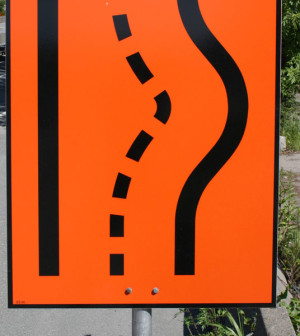- Skip Storing This Everyday Product in the Fridge Door
- Green Tea + B3 Pairing May Boost Brain Health
- Navigating Your Midlife Crisis: Embracing New Possibilities
- City Raccoons Showing Signs of Domestication
- Mapping the Exposome: Science Broadens Focus to Environmental Disease Triggers
- One Week Less on Social Media Linked to Better Mental Health
- Your Brain Changes in Stages as You Age, Study Finds
- Some Suicide Victims Show No Typical Warning Signs, Study Finds
- ByHeart Formula Faces Lawsuits After Babies Sickened With Botulism
- Switch to Vegan Diet Could Cut Your Greenhouse Gas Emissions in Half
Nearly 1 in 5 Americans Drinks at Least 1 Soda a Day: CDC


A new survey of American adults across 18 states finds 17 percent drinking at least one sugary soda per day, with rates varying widely across states.
For example, while about 12 percent of people in New York state or Hawaii downed one or more non-diet sodas each day, that number jumped to 30 and 32 percent in Tennessee and Mississippi, respectively.
The report, from researchers at the U.S. Centers for Disease Control and Prevention, also found high levels of sweetened fruit drink consumption, with close to 12 percent of adults downing at least one serving daily.
All of this is adding to increased caloric intake and widening waistlines, experts say.
“I think most people still don’t realize just how much sugar is found in these sugar-sweetened beverages,” said Dana Angelo White, a registered dietitian who is a clinical assistant professor of athletic training and sports medicine at Quinnipiac University in Hamden, Conn.
“I often do a demonstration and physically show people what 10 to 20 teaspoons of sugar looks like — it’s very powerful,” she said. “There’s also a disconnect on the downsides of all that sugar — so bad for teeth, blood sugar and waistlines — the extra calories really pile up quickly.”
The CDC research team, led by Dr. Gayathri Kumar of the agency’s National Center for Chronic Disease Prevention and Health Promotion, agreed.
“Regular soda and fruit drinks contain added sugars and are sources of calories but have few, if any, essential nutrients,” they wrote in the Aug. 15 issue of the CDC journal Morbidity and Mortality Weekly Report.
But where is soda and fruit drink consumption the highest? To find out, the researchers looked at 2012 data from a major U.S. government health survey. The data concentrated on more than 113,000 adult residents in 18 states across the United States.
Besides pinpointing which states had the highest and lowest rates of sugary drinks consumption, the study revealed other patterns. Frequent soda and fruit-drink consumers were typically younger and male blacks or Hispanics.
About one in every four people aged 18 to 34 drank one or more sodas per day, the study found, compared to just 10 percent of people age 55 or older. Men were more likely to drink sodas each day than women, at 21 percent versus 13.5 percent, respectively.
And while 21 percent of blacks and almost 23 percent of Hispanics drank a soda or more each day, that number fell to below 16 percent for whites, the researchers found.
Better education about the poor nutritional content of sodas and fruit drinks might help turn this situation around, the CDC team said. They pointed to prior research that showed that blacks were less knowledgeable about the caloric content of the average 24-ounce soda compared to whites. (That size cola averages about 300 calories, according to Harvard University researchers.)
Factors such as poverty, cultural issues and a lack of access to more nutritious food and drink options might play a role in state-to-state disparities in soda/fruit drink consumption, the researchers added.
Other nutrition experts had little good to say about sugary beverages.
“One of the main evils of soda is that it displaces other healthier choices,” said Arlene Stein, nutrition support dietitian at Winthrop-University Hospital in Mineola, N.Y.
“Calorically dense liquids like soda do not satiate hunger,” she pointed out. “Rather, they promote a rush of insulin, resulting in hunger soon after consumption.”
Nina Eng is chief clinical dietitian at Plainview Hospital in Plainview, N.Y. She said that, “the American Heart Association recommends that women consume no more than six teaspoons of added sugar per day [about 100 calories], and men consume no more than nine teaspoons [150 calories] per day.”
According to Eng, “one 12-ounce serving of soda contains eight teaspoons of sugar, which exceeds AHA recommendations for women in just one beverage.”
More information
Yale University has more facts here on sugary drinks.
Source: HealthDay
Copyright © 2025 HealthDay. All rights reserved.










